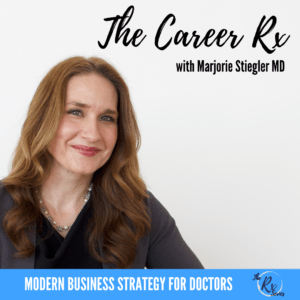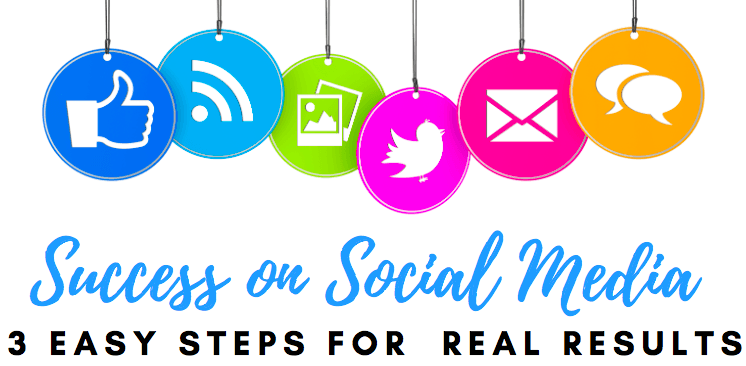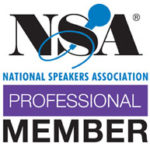Not sure how to optimize your LinkedIn profile? Is it worth it to optimize your LinkedIn profile? If you’re asking either of these two questions, perhaps you have already tried to update your LinkedIn profile but it doesn’t seem to be helping. Many people know they should be using LinkedIn but aren’t actually sure what it means to optimize their profiles, so we’ll explore some impactful and easy items today.
In this episode of The Career Rx we’ll discuss:
- Where and how to place keywords to boost your relevance
- Finding and reviewing your privacy settings
- Ways to strengthen your network connections and engagement
Today we are talking about underappreciated, under-implemented, and completely overlooked ways of optimizing your LinkedIn profile when you’re either looking for your next job opportunity, or looking to change industries entirely and do something new.
In this Episode:
[3:30] Use these three parts of your profile strategically
[7:00] If no one is checking you out, this might be why
[12:15] How to find and build your network with the right people
[14:08] How to engage in a way that gets results
[18:00] Worried about your current employer or colleagues?
Links and Resources:
The Branding Rx – 18 hours of CME, mastering digital strategies for advancing your career, building your business, and growing your professional brand
Industry Insider – 12 hours of CME, learn exactly how to land a rewarding nonclinical career without a new degree, special connections, prior experience, or a pay cut
LISTEN TO THIS EPISODE:
SUBSCRIBE TO THE CAREER RX PODCAST:
Get every episode on your preferred player…
Apple Podcast | Google Podcast | Spotify | TuneIn + Alexa | iHeart Radio
Thanks for joining me on this episode of The Career Rx!
Please be sure to leave me a review on Apple [here’s a 60 second step-by-step video] and don’t forget to send me your questions so I can answer them and give you a shout out on a future episode.
More for you:
The Speaking Rx 12 hours of CME, learn the business of professional public speaking to establish yourself as a thought leader you are, and get paid for your speaking expertise
Let’s connect!
Twitter | Instagram | Facebook | LinkedIn
TRANSCRIPT:
Episode 121 – How to Optimize Your LinkedIn Profile
Hey there, welcome back. Today I’m going to be talking about optimizing your LinkedIn profile in some ways that you may not have thought about before, or at the very least, often go by the wayside sort of underappreciated, or at least under implemented ways of optimizing your LinkedIn profile, when you’re either looking for your next job opportunity, or as is the case for many of my listeners, really looking to change industries entirely and do something new.
And we all know that’s not an easy thing to do, it can be difficult. And it can be especially difficult to make your resume and your LinkedIn profile, and your interview questions and so forth, really reflect the transferable or other skills that are of most relevance to the industry, you hope to get into, based on the work experience that you have to date, doing the work that you have done today to write and since you want to pivot it, that can be difficult.
But I’m going to use an example of a client who is at a small startup and interested in moving to a bigger company.
And he was surprised to find, well, actually, I was surprised, he wasn’t surprised, he was asking me how to go about getting better results with recruiters and better results with applications. And I was surprised that this person wasn’t already getting more solicitations, because he’s in a small startup in the industry he wants to stay in.
And he’s really just looking to move into a different type of organization. Very, very often, especially within biopharma medical devices and other life sciences, as with clinical medicine, it is very, very common to get recruiters soliciting you through your LinkedIn profile. And so if that’s not happening, that’s a little bit surprising. And once you have made the switch into industry, and you have that first job, sort of under your belt, so to speak, or at least on your resume, it is very, very common to experience a really big surge that picks up quickly and stays up with industry recruiters reaching out.
So I was very surprised to hear from him that was just not the case at all. So we did some evaluation and did some kind of digging into what was going on with his profile, because of course, one of the first questions that I asked is, is your profile optimized? Is your LinkedIn profile up to date? And he said, “Yes, it is.”
And I said, “Great.” We did a little more digging, we took a closer look at it. And there are some clear things that I think might be useful, really, for everybody to think about. When you are asking and answering the question is my LinkedIn profile optimized, make sure that you consider the following four things.
#1 So the first is probably not going to come as a surprise, it is keyword relevance. Do you have the right keywords in your profile? This is not only in your job title. But also in the skills section. A lot of people don’t even have a skill section, they haven’t bothered to set it up. Really important to set up the skills section.
You can of course talk about your skills in the descriptions of your jobs. So yes, you have your work experience, and you have your job titles. And within each of those, you should be displayed, you know, describing what you’ve been doing there. And those are places where you can include more relevant keywords in the industry that you tell LinkedIn is your industry.
So that’s another place where the keyword relevance is really important. And in the summary section, so the summary section and the description for jobs and the skill section to me, these are sometimes people are not utilizing these to the max.
Most people do have their work experience and they have their job titles. But within the descriptions of what you did at your job, this is a place where you can use a lot more descriptive language. And therefore when you have transferable skills, even if they kind of use different words.
So in your clinical environment, if there’s a certain term, but then the equivalent term for that in industry is a synonym or a different term. You can include both sets of those words in the description. They’re the description of the job that you did, and that will not be out of place. And of course, it’s not inaccurate, right? I’m talking about things that represent the work that you’ve done.
Not just throwing keywords in in a place where they don’t belong, but where you can be mindful of your choice of words. And again in the summary section where you describe yourself as a professional This is also a really great place where you can talk about what you aspire to do next, if you wish, I know a lot of people don’t want to necessarily have it out in public that they’re interested in looking for something new and next. And so you may, you may or may not want to write aspirational sentences in there that you would like to be able to make a contribution in a different kind of way, and so forth.
But, but you can, I mean, there’s the opportunity to include in the summary section, what you hope to do in your next role. And there is a great place, again, to include keywords for what you are not doing now, but what to do next.
It’s also a fantastic place where you could include both information about and therefore keywords related to any type of self education, any type of learning or certificates or work that you’ve done to try to get to know the industry that you aspire to enter a little bit.
So making sure that really throughout your profile, you have relevant keywords, not only that describe what you are doing, because of course, that’s, that’s your present day. And those are the experiences and skills that you have, but that you’ve been thoughtful about how you can incorporate the relevant keywords for the industry that you hope to be in or the role that you hope to move to next, throughout.
And you’re of course not going to be able to replace your job title with a different keyword job title, but you are going to be able to include these things in the skills section. And in the description of the jobs that you did within each of your work experience. In your summary section as well, that’s really, really important. So pay attention to keywords.
#2 Alright, the next thing that a lot of people don’t think about, and perhaps have not thought about, because they set up a LinkedIn profile a long time ago, and they just they haven’t checked in a while that makes sure you’re checking this, if nobody is coming to your profile, you want to check your privacy settings.
And you want to be sure that your LinkedIn profile is indeed both searchable and publicly visible. If it’s not, then recruiters aren’t going to be able to find it. Otherwise, colleagues, you know, people who would otherwise find you are not going to be able to see you.
And that’s really, really important. So especially as I was thinking about the the illustration, that was the inspiration for this episode, when we looked at his settings, it was that was one of the main problems, you’ve got to be sure that people can find and read your profile, and that all of these keywords and all of the rich description that you’re doing and all the you know, aspirations and goals that you’re including, can be read, and need to be able to be read by a person and also to be able to be read by a lot of the recruiting software that is used behind the scenes.
And I’m not a recruiter. So I don’t know a lot of those details. But I do know that they use software that is intended to help match keywords that they’re seeking, right, they’re looking for certain keywords or certain experiences.
And if it’s not written in your profile, and it’s not sort of a known synonym that already exists within their software programming, they’re not going to realize they’re not going to make those connections.
So just like in an interview, or any other forum, you know, you have to be sure that the way you’re representing yourself in those keywords, can be seen and understood by the people that you’re hoping will find you.
So check your settings, make sure your profile is public, make sure all of these relevant sections are public and searchable. That’s really like an easy one, make sure it’s turned on so people can find you. People can read about you, people can see it, and that you’re showing up in the search results.
We talked not too long ago in an episode about LinkedIn premium, that there is a functionality of LinkedIn premium that can also get you put near the top of search results. So if you are inclined to pay for LinkedIn premium for any number of months, however long that you’re really active in this space, you can even boost where you show up in terms of your visibility for recruiters in that way.
But you know, whether you’re doing that, or you’re not doing that, nonetheless, everything has to be public, it has to be searchable.
#3 Okay, the third thing that you want to check, and this is again, not always optimized, you know, as people think, is the strength of your network and your connections. So I know what you’re thinking, which is if I’m trying to get switched into a different industry, I don’t have those connections. I don’t have that network yet.
And that may be true, but that’s one of the most important things that you have to go about building. So you can start this in any number of ways. You could start it by looking at companies that you’re interested in and up might pop connections of yours and And that’s, that’s one of the ways that you can help to start building that network is be sure that LinkedIn knows your connections, or, you know, import your connections from your email account.
Or you can do this manually by looking at people who are alumni at your various schools.
I mean, it can go back as far as high school, if you want to, you can find other alumni and connect, connect, connect with the people that you know, to grow that strength of network, because then once you have that foundation, then you could go looking up companies or organizations, you want to work for upward pop connections that you have that work there, or that are connections of people that you know.
So that’s one of the strengths of LinkedIn is you get the first and second and sort of third degree connections. But when you have a mutual acquaintance, it makes you, you know, people are much more likely to accept your connection request, they’re also much more likely to talk to you about what it is that they do for a living.
So make sure you have a foundation of connections imported into LinkedIn, and then use that strategically to go find the kinds of organizations and companies that you’re interested in. And leverage the existing connections that you have that maybe these are people you’re not in touch with anymore, but you went to college together, that’s okay. Leverage that kind of sort of automatic connection that LinkedIn will provide for you.
And when you’re reaching out to mutual acquaintances, then that will really help it’ll pave the way and make it a lot smoother, because you’ll already feel connected or close to connected. And of course, don’t forget that when you do meet new people, make sure you click the connect button and establish a connection on LinkedIn.
This doesn’t mean that you’re besties, it just means that you are professional acquaintances. So if you have been made an introduction, you’re going to have an informational interview, and you talk to somebody for 20 minutes, click the connect button, really try to establish that because there’s a little bit of a snowball effect here, where you start to really build strength of relevant network.
And while that I don’t actually know if that makes a difference when recruiters are using their their dashboard tools, because it’s probably more on the keyword matching and less about does, you know, finding people that the recruiter already knows, because if they already knew them, they’d be calling them up, right.
So I don’t know if this helps in that regard. But I do know that it will help you to be seen in a more organic way, by recruiters and by employees of the kinds of companies that you’re interested in, if you’re networking with those people, and increasing your connections there.
So you can very easily grow the perceived strength of your connection network within LinkedIn, which helps you become more visible again and gets more people in the right industries to see your profile.
But also, even if it didn’t do any of that, when a recruiter gets your name somehow, however it might be, even if it’s just because you applied online through the portal, they’re going to come check you out on LinkedIn, it’s one of the first moves every every person hiring manager or recruiter and employer, they’re always going to come and check you out on LinkedIn. And when they do that, it’ll be really excellent for you.
If there’s a handful of little face bubbles that pop up there saying that you share two or three or eight or 15 connections, however many it may be, the more that that exists, the better because whether people are finding you organically, or finding you through a deliberate search tool looking for job candidates, or they’ve just gotten your resume because you applied and now they’re coming to scope you out.
So they’re coming to you, it’s really, really helpful for you to have all of the things that we already talked about . We obviously have to be public so they can find you, you’ve got to have those keywords in throughout. But it’d be really, really great to have, you know, as much as you can build it strength of network connections that’s relevant to your new industry.
#4 And then the fourth part of optimizing your profile isn’t really about your profile exactly. But it is about what you do with that profile. This is about you being active and engaging, and active and engaging in at least two ways.
One way is being actively engaged in groups. LinkedIn has a ton of groups, just like Facebook does, and so forth. Some are private, some are public, but you want to find groups that are industry groups for the type of role that you want to move into. And then be active in those conversations. I mean, this is really, really simple. It’s as simple as that.
Or you can follow the companies that you’re interested in and when they post something, some news or an announcement about you know, a new project or new person or whatever Whatever it is, you can comment on those posts.
And when you do this, when you engage with the company or you engage with groups, you are really boosting your visibility not only to recruiters because recruiters are definitely looking at all of that stuff all the time. But you’re also being noticed or being recognized and becoming familiar to people who are in the network, right?
People who are within that group, not all of them are connected to you today. But if you start to have a conversation, because you’re having, you know, comments around an article that was posted or something else, you know, pretty soon what you ought to be doing is hitting the connect button with that person.
This is how you grow your network. It’s how you network via LinkedIn, is to attend groups, events, and company post comment. And all of that is how you get to know people. And I suppose I could use air quotes to get to know people, because it’s a virtual relationship. And it’s just sort of an acquaintance level relationship.
But those are exactly the kinds of people that you should be hitting that connect button, and trying to get to know them more. These are the people you don’t know today, but who are in a position to help you either by teaching you about what it is that they do.
So you learn more about the job that you think you want, and make sure that you do in fact want it and kind of get more more working knowledge of the industry that you aspire to join and meet more people and potentially meet somebody who’s going to be in a position to either hire you directly or to refer you recommend you to a hiring manager.
So you want to do this with, you know, on a regular basis. I mean, this is very, very high yield activity, it’s probably much more high yield, than submitting a bunch of applications onto an application portal, whether it’s the job site itself, at that company, or even whether it’s applying through LinkedIn, applying like shouldn’t be the first step.
I mean, to me, that’s always kind of one of the things you want to work that last sending it into the black hole, even if you have a great looking resume, is just not the way that most people successfully and quickly find their next opportunities. It’s from people. And it’s not always from people that they know extremely well can be from people that they know, just peripherally. And this is how you set up and grow that.
And the great news for so many of my listeners who don’t want people to know that they’re looking either for a new role, or for an entirely new direction is that literally all four of these things can be done without tipping your hand in public.
There’s no reason at all, why having a public and searchable profile that incorporates relevant keywords into descriptions of things that you are doing in your summary and in your job, and growing your connections. And being active on posts and in groups.
That’s not, that’s not anything that needs to give away anything, it’s probably not even something that would ever come to the attention of your colleagues or your current boss. But even if it did, none of these things are overtly looking for jobs. This is just you being an active professional. And it allows you to be found to be optimized to grow your network, increase the chances that when you find a job of interest that you’ll have a connection there, or increase the likelihood that you get found by a recruiter who is looking for somebody with your type of skill set.
Before I close, I mean, hopefully it’s clear, but just to be extremely clear. Having your photograph and your job title and your work history. And your educational history is absolutely the bare bare minimum. That’s not an optimized profile, not even close. These other things that we’ve just been talking about is how you optimize your profile.
So thanks for listening. Now I know that you won’t be sort of lulled into that same mistake of saying yeah, my LinkedIn profile is up to date and complete. If it’s literally just listing your job titles and your education, it is not up to date, it is not complete, if it has not been optimized in the skills section, the descriptions, the summary section, your connections, your groups, your posts, if all of that engagement has not been optimized, and of course, if it’s not public and searchable in your settings, you do not have an optimized LinkedIn profile.
But once you start doing these things, you will get traction you will be I will be very surprised if you don’t get people coming to you.
But even if you don’t, you’ll be in a much much better position to be viewed more favorably when people come check you out which they will as soon as you apply for a job or mentioned to us associate a colleague and acquaintance, hey, I’m interested in checking out this job would you be able to forward my resume or put in a good word for me, the first action anyone’s going to take is going to be to come to that LinkedIn profile.
You want all this stuff set up to make a favorable first impression. get eyes on your profile, and grow your connections. This is how people get jobs in the modern day and it’s what you need to be doing too. Don’t say it’s optimized unless you’ve done these things. That’s all for this episode. Bye for now.
Before you go, please leave me a review on Apple Podcasts, share and subscribe to this podcast. Your support makes all the difference and it truly helps this information reach someone who may really need it. Until next time, thanks for listening.








